Art & Exhibitions
Titian’s ‘Poesie’ Paintings Transformed Western Art. One U.S. Museum Is Showing Them All Together—and It Will Never Happen Again
Bringing the show together was a herculean task, that involved literally rewriting laws.
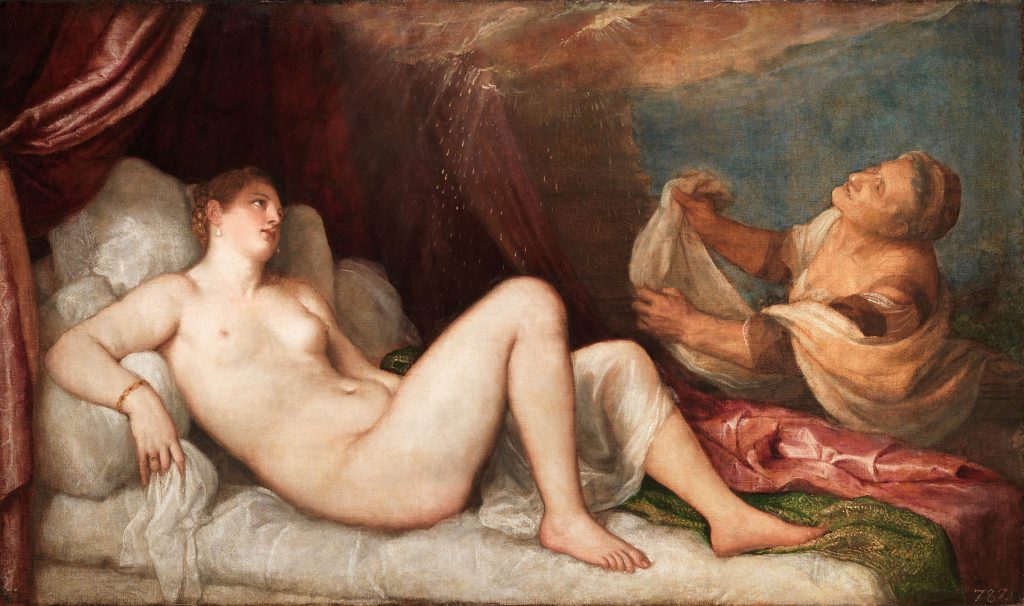
Bringing the show together was a herculean task, that involved literally rewriting laws.

Sarah Cascone

On paper, the Isabella Stewart Gardner Museum’s show of seven paintings by the Italian Renaissance great Titian might sound a modest affair, but make no mistake: “Titian: Women, Myth & Power” is a not-to-be-missed art event.
It’s “the art event of the year, and possibly the decade” wrote Sebastian Smee in the Washington Post. The Boston Globe was even more effusive, calling it “the exhibit of a lifetime—several, in fact.”
That’s because the show reunites a suite of perhaps Titian’s most famous paintings for the first time since the 16th century. Called Titian’s “Poesie” series—he considered them poetic inventions—the six monumental paintings illustrate myths as told in Ovid’s Metamorphoses, the famous ancient Roman poem.
“These paintings are not just central in Titian’s career, but are transformational in the history of Western painting,” Nathaniel Silver, curator at the Gardner, told Artnet News.

Titian, Diana and Castillo (1556-59). Collection of the National Gallery London/the National Galleries of Scotland.
Philip II, the future king of Spain and one of the era’s most significant arts patrons and collectors, commissioned the series when the artist visited him in Augsburg, Germany, over the winter of 1550 and 1551. It was the second and final time the two ever met in person. (A portrait of Philip is the seventh Titian included in the show.)
“Titian paints the ‘Poesie’ in his 60s. He’s at the peak of his accomplishments, and he’s working for his most enlightened and important patron,” Silver said.
“They also track this moment in Titian’s technique where he’s transitioning from a more linear, harder edged contour to a much brushier, almost Impressionistic way of painting,” Silver added. “It’s interesting for Titian, but it’s hugely important in the history of art, because it’s this new way of approaching the human figure with a soft contour—the idea of suggesting form rather than meticulously describing it—that really resonates with the next generation of artists.”
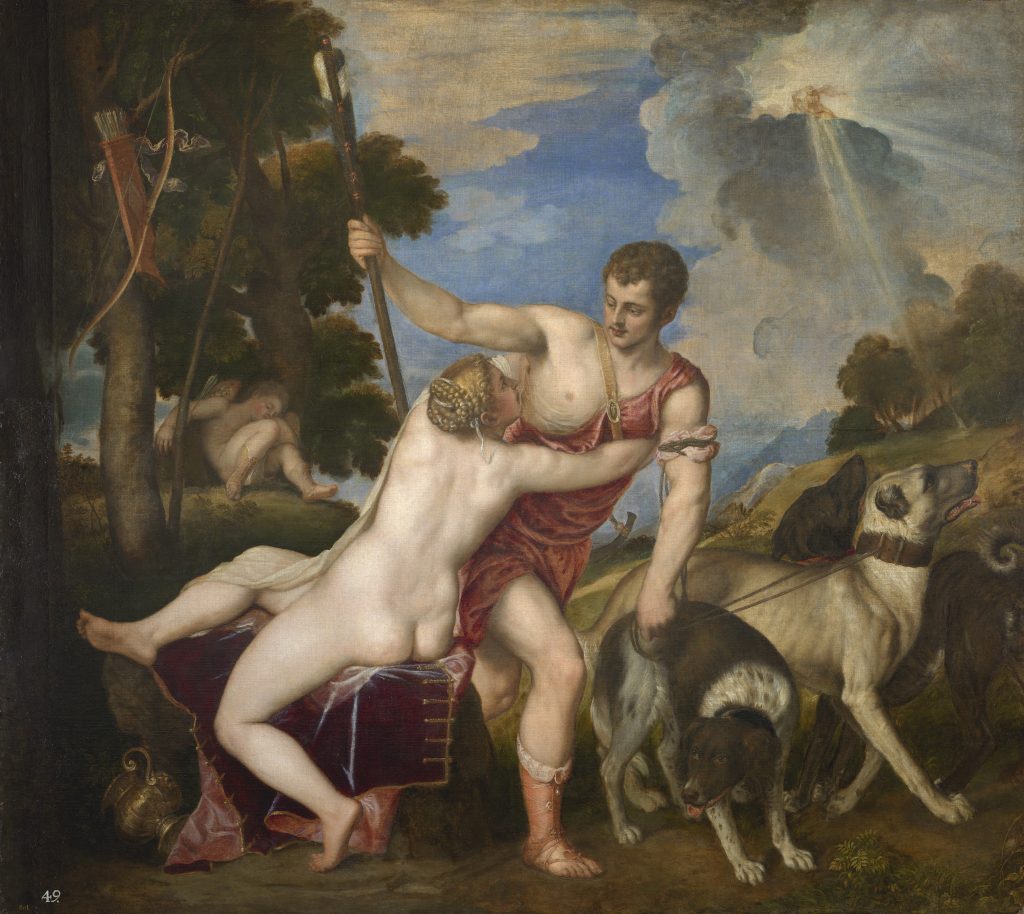
Titian, Venus and Adonis (1554). Collection of the Museo Nacional del Prado, Madrid.
Yet despite the works’ importance, the royal collection began splitting up the set even within Philip’s lifetime, scattering the “Poesie” canvases throughout Europe, and eventually to the U.S. Isabella Stewart Gardner managed to buy one that had passed to the French royal collection and then to England following the revolution.
“Isabella was a pioneer in her time, especially in the field of Renaissance paintings,” Silver said. “She brought many of the first authentic examples of celebrated Renaissance paintings to the U.S.”
“These paintings all have very different histories,” Silver added. “Perseus and Andromeda was at one point owned by Van Dyke, the English painter, the Danae was owned by Napoleon and taken by the Duke of Wellington from Napoleon’s wagon train as Napoleon was retreating.”
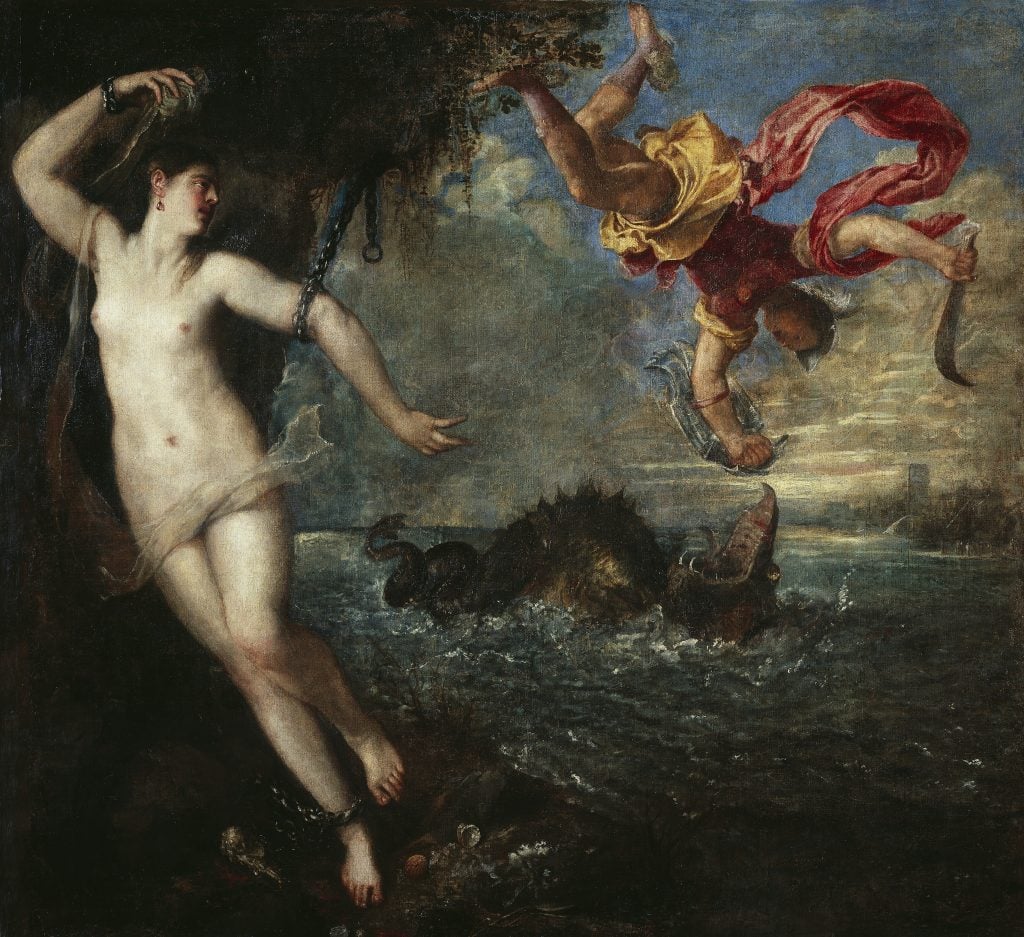
Titian, Perseus and Andromeda (ca. 1554–56). Collection of the Wallace Collection, London.
Only one remains in Spain, at the Museo del Prado in Madrid. Besides the Gardner canvas, and the rest are in the U.K. Two are jointly owned by the National Gallery in London and the National Galleries of Scotland in Edinburgh. The others belong to the Wallace Collection and the Wellington Collection, both in London.
“These six paintings are some of the crown jewels of the collections where they are today,” Silver said. “No one ever really thought it would be possible for each institution to part with them at the same time as the others.”
The Gardner is the only U.S. venue for the exhibition, which debuted in London at the National Gallery and traveled to the Prado. A fourth stop at the National Galleries of Scotland had to be cancelled due to the pandemic, which saw the show shutter its inaugural London presentation no less than three times due to lockdown restrictions.
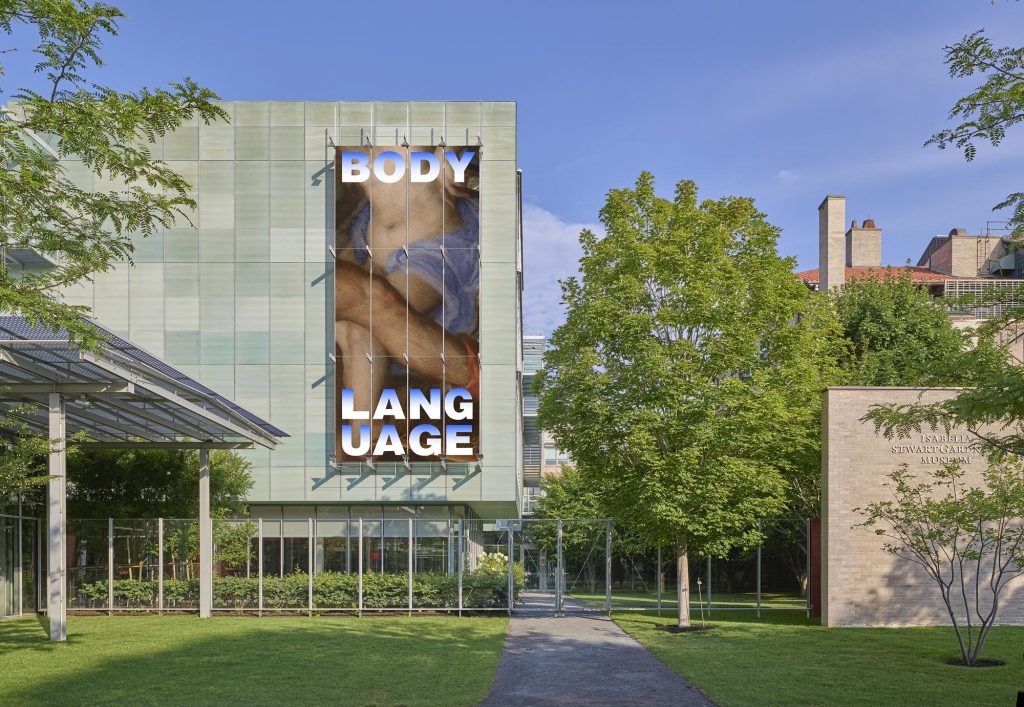
Barbara Kruger, Body Language (2021) at the Isabella Stewart Gardner Museum, Boston, for “Titian: Women, Myth & Power” (artist rendering). Photo courtesy of the Isabella Stewart Gardner Museum, Boston.
In Boston, the Gardner invited contemporary artists Barbara Kruger and duo Mary Reid Kelly and Patrick Kelley to put their own spin on the classical subject matter that inspired Titian. The museum wanted to acknowledge that Ovid’s myths prominently feature sexual violence against women, and to reconsider these age-old stories from the perspective of women.
Kruger’s Body Language is a banner that hangs from the museum’s facade, featuring a closely cropped detail from Diana and Actaeon, where the hunter Actaeon unwittingly intrudes on the goddess Diana and her nymphs while they are bathing. (She transforms him into a stag and his hounds kill him.)
Kelley and Kelley made a short film, The Rape of Europa, which gives voice to the title character, having her speak in satirical poetry.
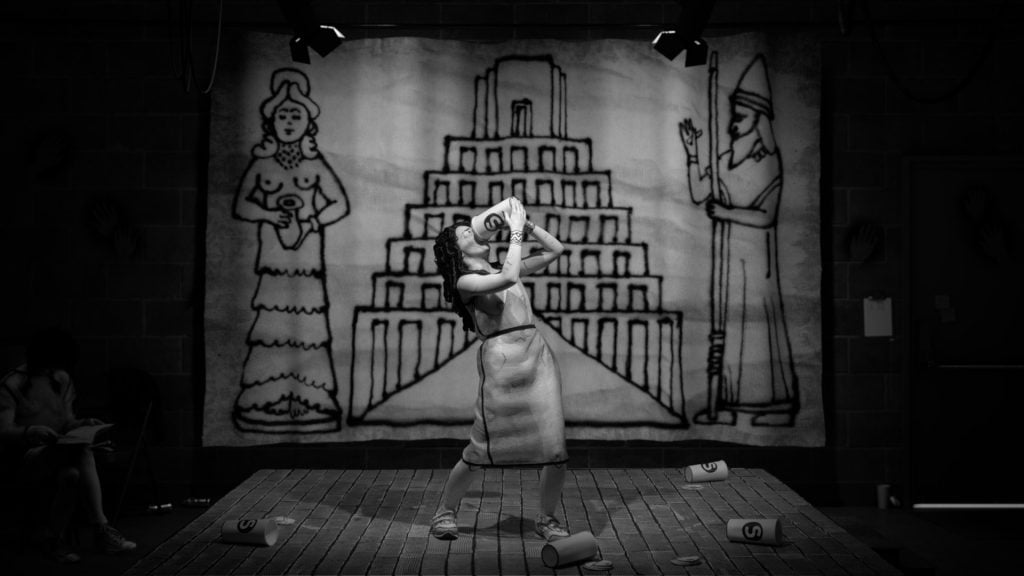
Mary Reid Kelley and Patrick Kelley, Still from The Rape of Europa (2021), still. Commissioned for “Titian: Women, Myth and Power” at the Isabella Stewart Gardner Museum, Boston. Photo courtesy of the Isabella Stewart Gardner Museum, Boston.
“It really responds to Ovid, because if you read the Metamorphoses in Latin, he uses a lot of plays on words and they’re quite funny in a very dark way,” Silver said. “Mary picked up on that and reworked it in a modern context, which I thought was a brilliant way of engaging with the classical source and the Titian painting.”
The exhibition was in the works for five years, but was only made possible in 2019, when the Wallace finally got permission to loan works from its collection. The government had previously disallowed loans as a condition of the founder’s bequest.
“The Wallace Collection had never before lent any work of art anywhere,” Silver said. “The director and trustees raised the possibility of an alternative interpretation of the bequest, and the Ministry of Culture agreed. They will from now on be able to lend works of art.”
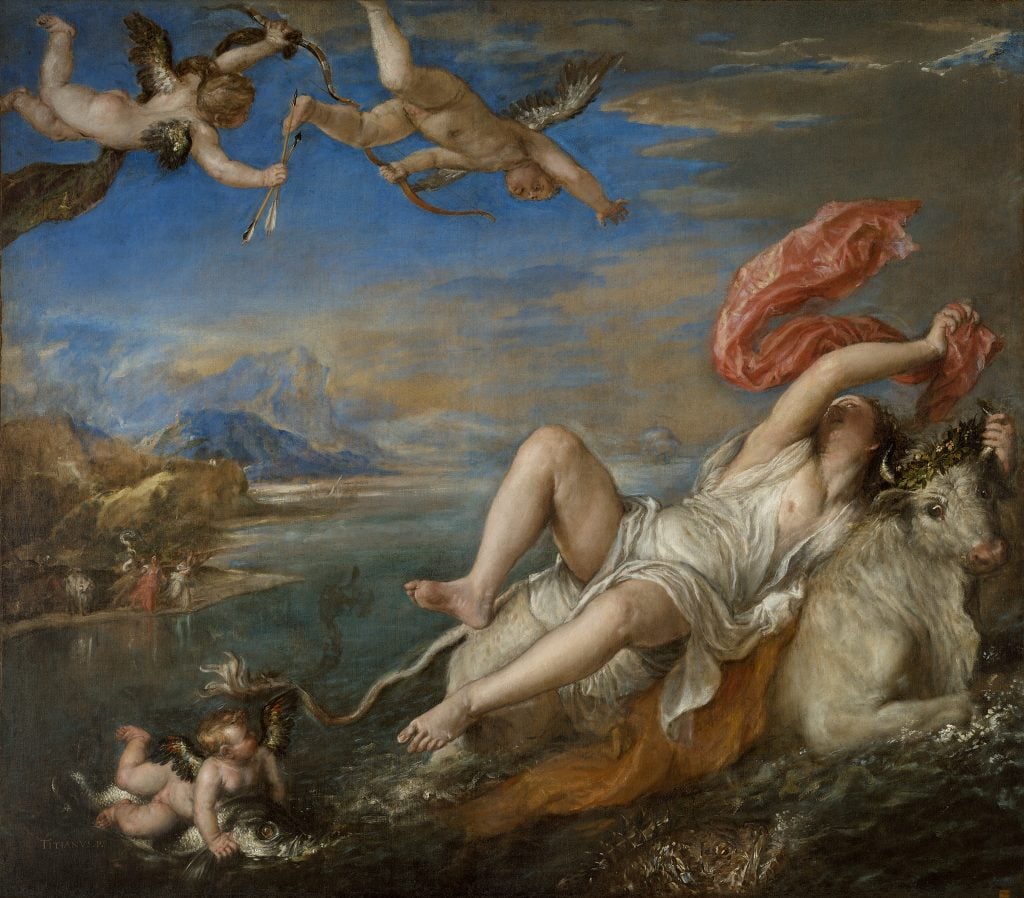
Titian, The Rape of Europa (1560–62).
Even with that hurdle cleared, reuniting the “Poesie” series was an immense task. Just shipping the works from Spain to Boston was complicated, being delayed by COVID, flooding in Europe, and even the Olympics, due to complications surrounding horses set to travel to Tokyo for the equestrian events.
Realistically, the works are too fragile, the shipping and insurance costs too high, and the logistics too complex, to ever hope to bring them together again.
In painting the “Poesie” series, Titian started with two scenes he had painted before. Danaë, showing the title figure being impregnated by Zeus in the form of a shower of gold, is now at the Wellington Collection. Venus and Adonis, in which Venus, bewitched by Cupid’s arrow, tries in vain to prevent her young love Adonis’s death at the hands of a wild boar, stayed in Spain, at the Prado.
With the remaining four paintings, Titian ventured out into fruitful new territory. The series culminated with The Rape of Europa, now at the Gardner.
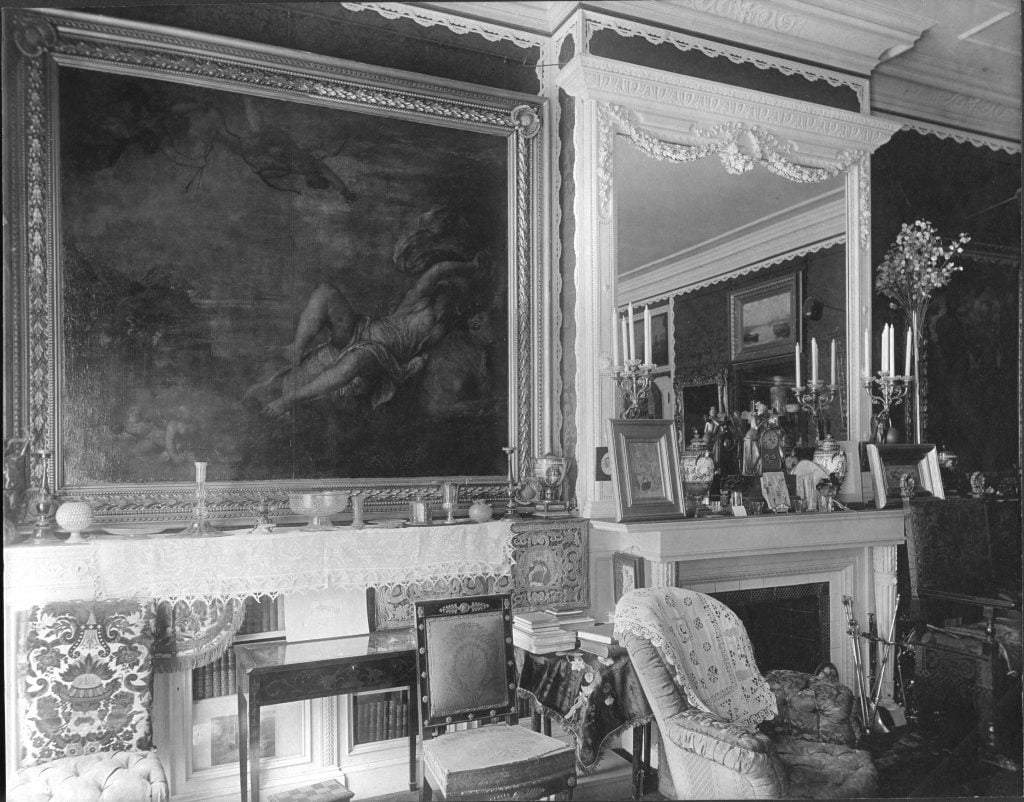
Titian’s Rape of Europa hanging in the Red Drawing Room at Isabella Stewart Gardner’s Boston home, now a museum, in 1900. Photo by Thomas E. Marr.
“It’s like Titian’s warming up with subjects he’s familiar with, and then he breaks free and that’s where you begin to see the most visible innovation and creativity,” Silver said.
The painting entered the Gardner collection 125 years ago this very month. It cost £20,000, then a record price for an Old Master—but the museum’s founder was determined to bring the first genuine Titian canvas to the U.S.
“And it wasn’t just any Titian—it was this incredibly celebrated Titian. It became an immediate sensation,” Silver said. “From our perspective today, Isabella got a deal. She got one of the most important paintings in the history of Western Art. Today, The Rape of Europa is considered the most important Renaissance painting in the U.S.”
Reunited with the rest of the series, the painting’s power is all the more apparent today.
“It’s taken almost five centuries to get the ‘Poesie’ back together in one place,” Silver said. “It really is a one-time opportunity to see them all as Philip intended them.”
“Titian: Women, Myth & Power” is on view at the Isabella Stewart Gardner Museum, August 12, 2021–January 2, 2022.